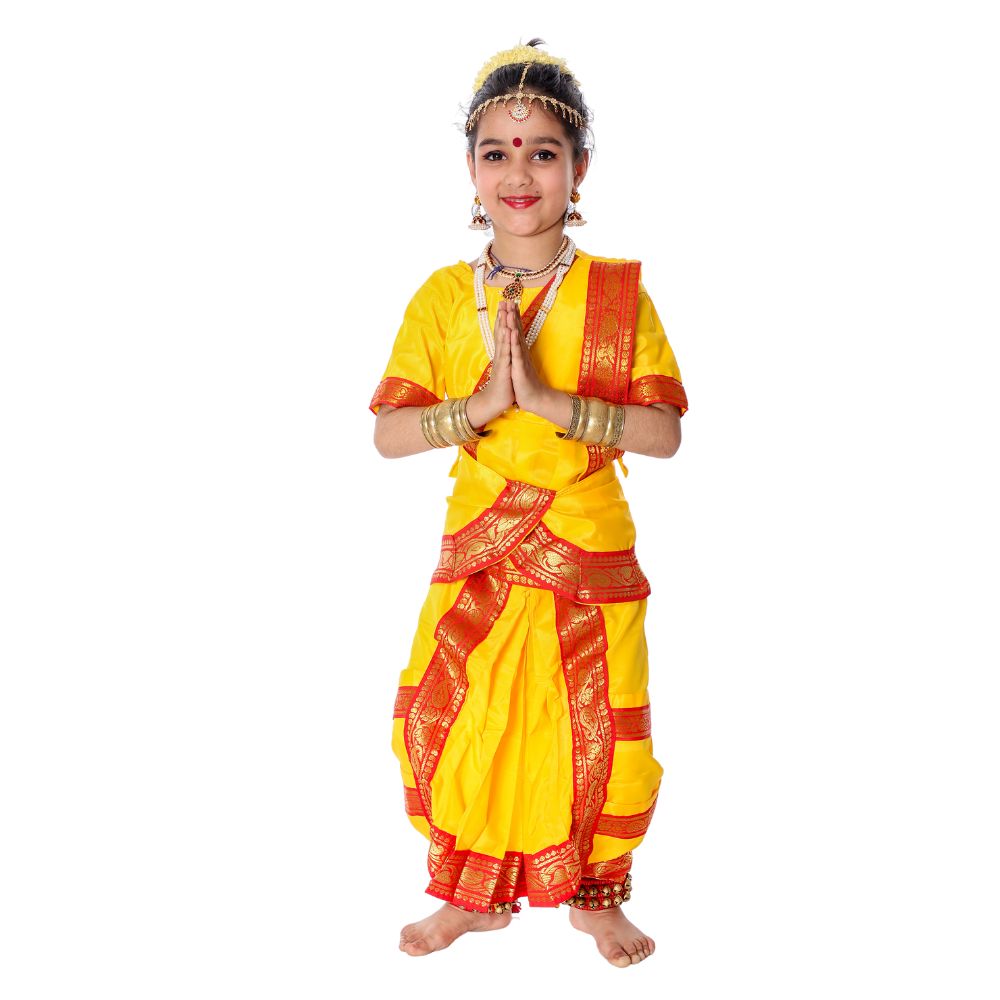




64 People are viewing this right now
Inclusive of all taxes
Country Of Origin : India
If the order is placed before 5 PM, the parcel will be delivered within 48-72 hours in metro and air-connected cities, and within 3-5 days in the rest of India.
Select Your Age

SKU: SFD10034
Availability : In Stock
Fast Delivery Available in Metro & Major Cities
Standard Delivery Time 3-5 Days
Worldwide Parcel Delivery
Bharatanatyam dance dress is a visually captivating ensemble, deeply rooted in tradition. Known for its stunning combination of vibrant colors and intricate designs, this costume elevates the beauty and elegance of the dance. The ensemble typically includes a sari draped uniquely to allow the dancer to move freely while maintaining a graceful appearance.
Product Specifications:
Read Also: Refund Policy | Bulk Orders | About Us